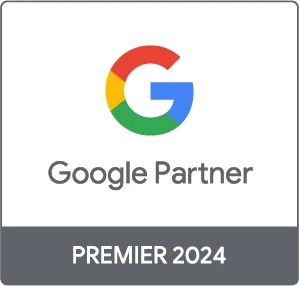Mastering Content Marketing: Strategies for Engagement and Growth
For brands, having a digital presence is no longer just an option but a necessity – that’s a fact.
Content marketing. in particular, has emerged as a powerful tool for businesses to engage, inform, and build trust with their target audience.
It’s a strategic approach that involves the creation and sharing of relevant, valuable, and engaging content to attract and convert prospects into customers, and customers into repeat buyers.
But what does it take to master it?
Table of Contents
Key Takeaways
- Content Marketing is an approach to engage audiences and reflect the essence of a brand.
- Crafting a comprehensive strategy involves identifying target audience, setting measurable goals, and selecting appropriate distribution channels.
- Leveraging SEO & social media strategies along with quality content can help drive conversions and establish authority in the industry.
The Essence of Content Marketing

Content marketing fundamentally involves:
- Narrating your brand’s story
- Engaging your audience in a meaningful dialogue
- Supplying them with pertinent content that enriches their lives
- Establishing your brand as a reliable information source To better understand this approach, let’s explore the content marketing definition.
From blog content to video content, every piece of content you create should resonate with your audience and reflect the essence of your brand.
Content marketing doesn’t conform to a universal strategy. It’s a persistent cycle of experimentation and learning, comprehension of audience preferences, and adaptation to the shifting trends in online marketing. From SEO copywriting to the use of social media strategy, every aspect of your content marketing strategy should work in harmony to increase brand awareness, drive traffic, and convert prospects into customers.
Crafting a Robust Content Marketing Strategy

Creating a solid content marketing strategy resembles assembling a jigsaw puzzle. Every element – identifying your target audience, setting quantifiable goals, and choosing appropriate distribution channels – plays a significant role in the overall picture. When these pieces come together, they form a comprehensive content marketing strategy that drives growth and engagement.
Identifying Your Target Audience
At the heart of any successful content marketing strategy is a deep understanding of your target audience. Who are they? What are their interests, needs, and challenges? The answers to these questions will serve as your compass, guiding you in creating content that resonates with your audience and drives engagement.
Understanding your audience extends beyond demographics to include their behaviors and preferences. For instance, millennials and Gen Z, who have been exposed to technology from a young age, value search engine optimization and prioritize experiences over material possessions. Hence, adaptive content, tailored to be versatile and responsive to varied user needs, can be an effective tool to engage with this technologically adept audience.
Setting Measurable Goals
Establishing quantifiable objectives forms the foundation of a successful content marketing strategy. It’s not enough to simply create content; you need to establish clear, achievable, and quantifiable objectives that align with your overall business goals. A successful content marketing campaign is built upon this strong foundation.
In content marketing, these objectives are often framed as SMART goals – Specific, Measurable, Achievable, Relevant, and Time-bound. For instance, if your goal is to increase brand awareness, a SMART goal might be to increase website traffic by 20% over the next six months. By applying the SMART framework to your content marketing goals, you can ensure that your efforts are well-defined, measurable, and contribute to the success of your overall marketing strategy.
Choosing the Right Channels
Selecting the appropriate channels for content distribution is as significant as the actual content. Different platforms appeal to different segments of your target audience, and understanding where your audience spends their time online is key to ensuring your content reaches them.
Whether it’s social media, email, or your own website, each channel has its own strengths and can be leveraged to boost your content marketing efforts. For instance, video content might perform best on social media platforms like YouTube or Instagram, while in-depth blog posts might be more suitable for your website or email newsletters.
Aligning your content strategy with your audience’s preferences can help enhance the reach and influence of your content.
The Intersection of SEO and Content Marketing

SEO and content marketing are two sides of the same coin. While SEO increases your site’s visibility in search engine results, content marketing ensures that once users land on your site, they find valuable and engaging content that prompts them to stay and explore. Combined, they formulate a potent strategy that promotes organic traffic, fosters authority, and enhances conversions.
Conducting Keyword Research
Keyword research forms the bedrock of SEO. It involves identifying the words and phrases that your target audience uses when they’re searching for information related to your business, then incorporating these keywords into your content to increase its visibility in search engine results.
The process of keyword research involves understanding your audience’s search intent, or the why behind their search queries. By aligning your content with your audience’s search intent, you can ensure that your content not only ranks well in search results but also provides the information that your audience is looking for. This can lead to higher click-through rates, increased dwell time on your site, and ultimately, higher conversions.
Optimizing Web Pages for Search Engines
Optimizing your web pages for search engines involves more than just sprinkling keywords throughout your content. It’s about creating high-quality, informative content that meets your audience’s needs and adheres to search engine guidelines. This includes:
- Using relevant keywords in your title tags, meta descriptions, and headers
- Ensuring your web pages load quickly
- Making your site mobile-friendly
- Creating a logical site structure that makes it easy for both users and search engines to navigate.
Optimizing your web pages for search engines can elevate your site’s visibility, attract more traffic, and improve user experience, culminating in increased engagement and conversionsWorking with an experienced SEO agency makes this process much easier
Building Authority Through Quality Content
Establishing authority is a significant component of content marketing. When you consistently create valuable, high-quality content, you position your brand as an industry leader and a trusted source of information. This not only improves your site’s ranking in search engine results but also encourages users to engage with your content and share it with their networks.
But how do you create content that builds authority? It starts with understanding your audience’s needs and challenges, and creating content that provides solutions to these problems. Whether it’s a how-to guide, an informative blog post, or an in-depth research report, your content should provide value to your audience and demonstrate your brand’s expertise in your industry.
Leveraging Social Media in Your Content Marketing Efforts

With billions of global active users, social media platforms offer a broad arena for your content marketing initiatives. They offer a platform to share your content, engage with your audience, and amplify your reach. In other words, social media can supercharge your content marketing strategy.
Creating Shareable Social Media Posts
The creation of shareable social media posts is an art form. It’s about crafting compelling content that resonates with your audience and encourages them to share it with their networks. Whether it’s a thought-provoking blog post, an engaging video, or an informative infographic, your social media content should be designed to spark conversation and spread like wildfire.
One way to make your social media posts more shareable is by incorporating relevant hashtags. Hashtags can increase the discoverability of your posts and drive engagement, making it easier for your content to be discovered by a broader audience. By using hashtags strategically, you can amplify your reach and make your content more shareable.
Integrating Social Media Strategy with Content Goals
A thriving content marketing strategy doesn’t function in isolation. It’s about integrating all your marketing efforts, including social media, to create a cohesive and effective strategy. This means aligning your social media marketing strategy with your content general marketing goals, from building brand awareness to driving conversions.
This could involve:
- Creating a content calendar to schedule your social media posts in advance
- Using social media analytics to track the performance of your posts and optimize your strategy
- Engaging with influencers to amplify your reach
By integrating your social media strategy with your content goals, you can create a content marketing strategy that is more than the sum of its parts.
The Power of User-Generated Content

User-generated content (UGC) serves as a potent instrument in content marketing. It refers to content created by your customers or users, such as reviews, testimonials, social media posts, and more. Not only does UGC save you time and resources, but it also helps build brand awareness and foster trust with your audience.
UGC is essentially a form of word-of-mouth marketing. When users see content created by their peers, they are more likely to trust and engage with your brand. By encouraging and leveraging UGC, you can create a community of brand advocates, amplify your reach, and boost your content marketing ROI.
Driving Conversion with Effective Landing Pages
The final aim of any content marketing strategy is to stimulate conversions – converting website visitors into customers. One effective way to do this is by creating targeted, keyword-focused landing pages. These are standalone web pages that are designed to convert visitors into leads or customers.
Landing pages work by providing a specific solution or offering to a specific problem, typically in exchange for the visitor’s contact information. For instance, a landing page could offer a free eBook or a discount code in exchange for the visitor’s email address. By aligning the content of your landing pages with your target audience’s needs and interests, you can significantly increase your conversion rates and improve your content marketing ROI.
Content Marketing Across the Customer Journey
The customer journey, transitioning from awareness to consideration and decision, is a vital element of any content marketing strategy. It’s about understanding where your customers are in their buying process and tailoring your content to meet their needs at each stage.
Tailoring Content for the Awareness Stage
The awareness stage is the first stage of the customer journey, where potential customers are just beginning to recognize their needs or problems. At this stage, your content should aim to:
- Educate and inform your audience about your industry, products, or services
- Build brand awareness
- Set the stage for the subsequent stages of the customer journey.
Content that works well at this stage includes:
- Blog posts
- Articles
- Infographics
- Educational videos
The goal is not to sell but to inform. By providing your audience with valuable and informative content, you can position your brand as a trusted source of information, build rapport with your audience, and guide them to the next stage of the customer journey.
Engaging Users in the Consideration Stage
The consideration stage is the second stage of the customer journey, where potential customers are aware of their needs or problems and are actively looking for solutions. At this stage, your content should aim to address your audience’s pain points, showcase your expertise, and position your brand as a solution to their needs.
Content that works well at this stage includes case studies, product demos, and how-to articles or videos. Here, the goal is not just to inform but also to convince. By showcasing how your product or service can solve your audience’s problem, you can build trust, establish your brand’s credibility, and guide your audience to the next stage of the customer journey.
Refreshing Your Content: The Importance of Updates and Relevance
In the ever-changing digital landscape, content can quickly become outdated or irrelevant. That’s why it’s essential to regularly update and refresh your content to maintain its relevance and improve its SEO. This includes updating facts and statistics, adding new information or insights, and optimizing content based on current SEO best practices.
Refreshing your content not only benefits your SEO but also improves the user experience. When users see that your content is up-to-date and relevant, they are more likely to trust your brand and engage with your content. So don’t let your content gather digital dust – keep it fresh and relevant to keep your audience coming back for more.
Measuring Success: Analytics and Content Marketing
Measurement is fundamental to the success of any content marketing strategy. It’s about using analytics tools to track the performance of your content marketing efforts, identify areas of improvement, and optimize your strategy for better results. This includes tracking metrics like:
- website traffic
- engagement
- conversion rates
- social media shares
- email open rates
- click-through rates
By regularly monitoring and analyzing these metrics, you can make data-driven decisions to improve your content marketing strategy.
By analyzing these metrics, you can gain insights into what works and what doesn’t in your content marketing strategy. This allows you to make data-driven decisions and continually refine your strategy for better results. Remember, content marketing is a continuous process of learning and improving, and analytics is your guide on this journey.
Paid Advertising: Complementing Your Content Marketing
While organic growth is vital for a sustainable content marketing strategy, paid advertising can significantly amplify your efforts. Paid ads can help you reach a wider audience, drive more traffic to your content, and ultimately, increase conversions. This includes using platforms like Google Ads, Facebook Ads, and more to promote your content to a targeted audience.
However, paid advertising should not replace your content marketing efforts but complement them. It’s about finding the right balance between organic and paid strategies to maximize your reach and ROI. So whether you’re a new business trying to gain visibility or an established brand looking to boost your content marketing efforts, consider integrating paid advertising into your strategy.
Innovations in Content Creation
In the constantly changing realm of content marketing, maintaining a competitive edge is vital for success. This means keeping an eye on the latest trends and innovations in content creation, from new content formats and platforms to emerging technologies.
For instance, virtual reality (VR) and augmented reality (AR) are being used to create immersive experiences that engage audiences in a whole new way. Similarly, AI and machine learning are being used to personalize content and improve the user experience. By exploring these innovations, you can create engaging and impactful content that sets your brand apart from the competition.
Summary
In conclusion, mastering content marketing strategy is not a one-time task but a continuous journey of learning, experimenting, and improving. From understanding your audience and crafting a robust strategy to leveraging social media and staying ahead of the latest trends, every aspect of content marketing plays a crucial role in driving growth and engagement. And while the path to mastery may be challenging, the rewards – increased visibility, customer loyalty, and business growth – make it a journey worth embarking on.






